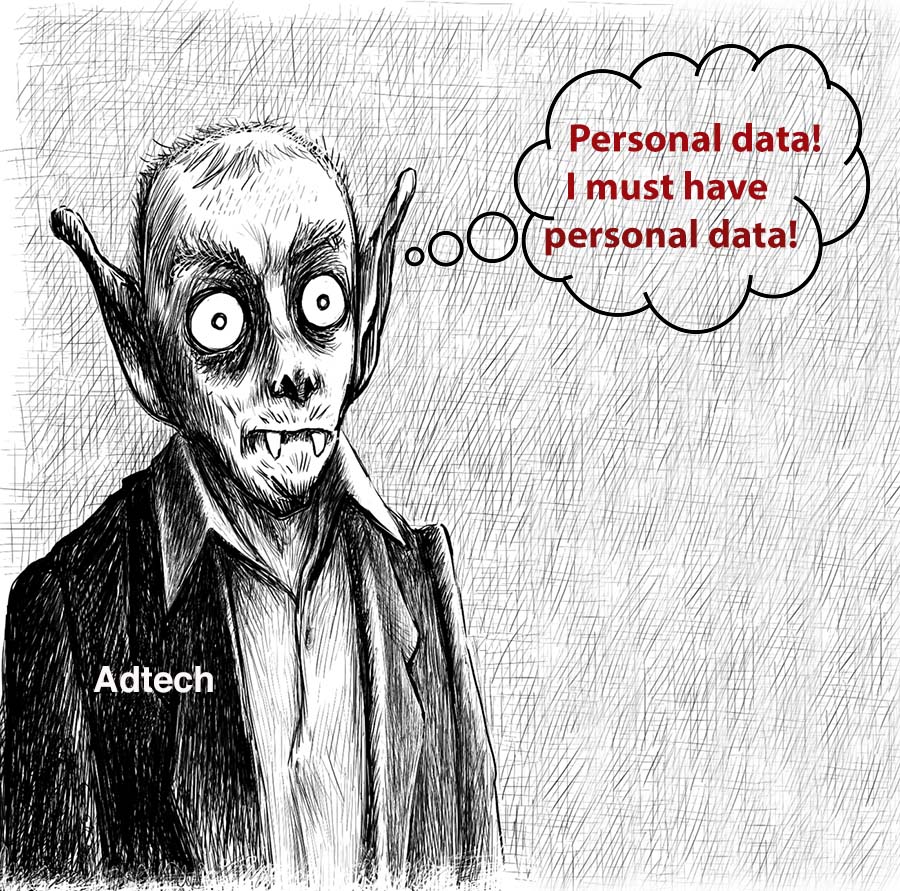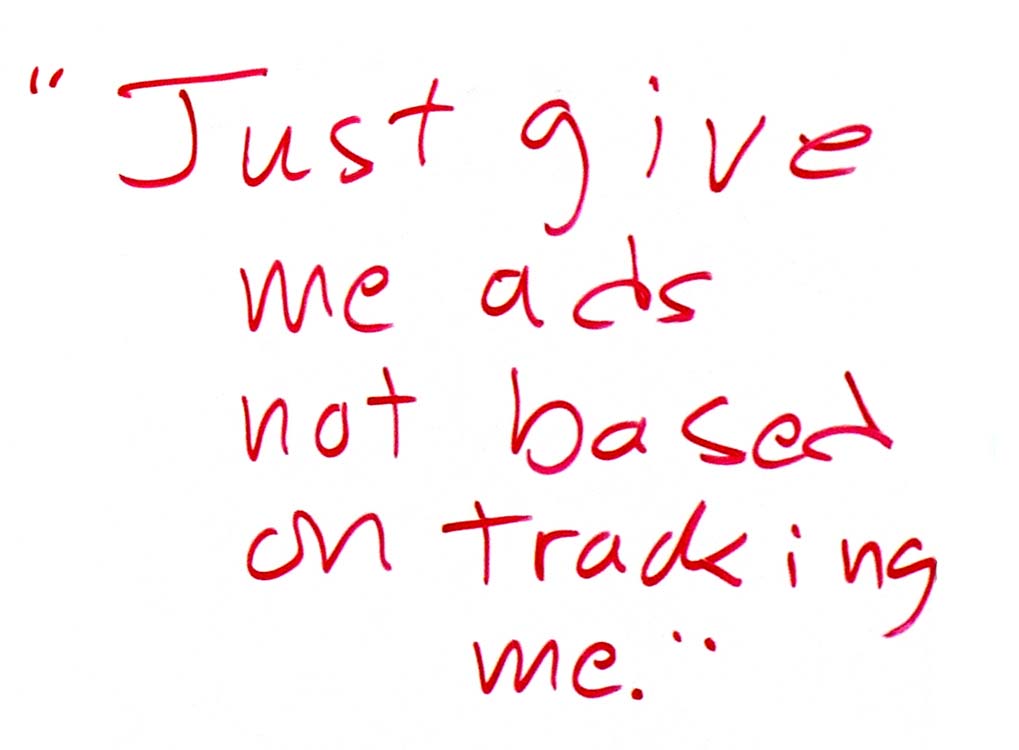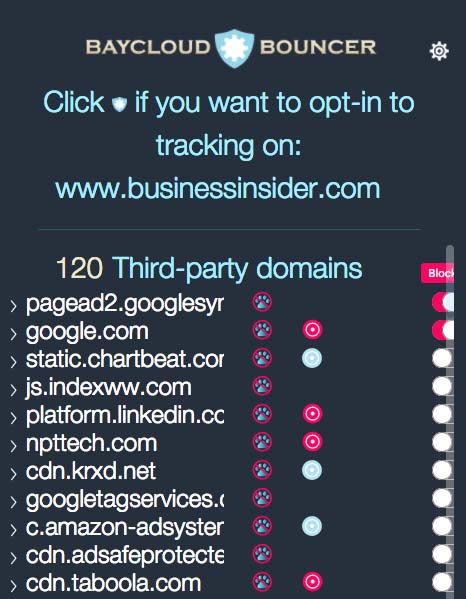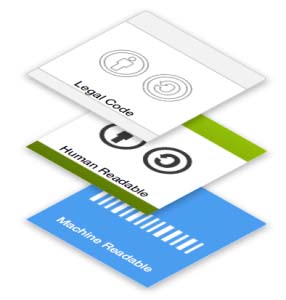

This is the first issue of the reborn Linux Journal, and my first as Editor in Chief. This is also our first issue to contain no advertising.

We cut out advertising because the whole online publishing industry has become cursed by the tracking-based advertising vampire called adtech. Unless you wear tracking protection, nearly every ad-funded publication you visit sinks its teeth into the data jugulars of your browsers and apps to feed adtech's boundless thirst for knowing more about you.
Both online publishing and advertising have been possessed by adtech for so long, they can barely imagine how to break free and sober up—even though they know adtech's addiction to human data blood is killing them while harming everybody else as well. They even have their own twelve-step program.
We believe the only cure is code that gives publishers ways to do exactly what readers want, which is not to bare their necks to adtech's fangs every time they visit a website.
We're doing that by reversing the way terms of use work. Instead of readers always agreeing to publishers' terms, publishers will agree to readers' terms. The first of these will say something like this what is shown in Figure 1.

Figure 1. Readers' Terms
That appeared on a whiteboard one day when we were talking about terms readers proffer to publishers. Let's call it #DoNotByte. Like others of its kind, #DoNotByte will live at Customer Commons, which will do for personal terms what Creative Commons does for personal copyright.
Publishers and advertisers can both accept that term, because it's exactly what advertising has always been in the offline world, as well as in the too-few parts of the online world where advertising sponsors publishers without getting too personal with readers.
By agreeing to #DoNotByte, publishers will also have a stake it can drive into the heart of adtech.
At Linux Journal, we have set a deadline for standing up a working proof of concept: 25 May 2018. That's the day regulatory code from the EU called the General Data Protection Regulation (GDPR) takes effect. The GDPR is aimed at the same data vampires, and its fines for violations run up to 4% of a company's revenues in the prior fiscal year. It's a very big deal, and it has opened the minds of publishers and advertisers to anything that moves them toward GDPR compliance.
With the GDPR putting fear in the hearts of publishers and advertisers everywhere, #DoNotByte may succeed where DoNotTrack (which the W3C has now ironically relabeled Tracking Preference Expression) failed.
In addition to helping Customer Commons with #DoNotByte, here's what we have in the works so far:
We need help with all of those, plus whatever additional code and labor anyone brings to the table.
Before going more deeply into that, let's unpack the difference between real advertising and adtech, and how mistaking the latter for the former is one of the ways adtech tricked publishing into letting adtech into its bedroom at night:
In the offline publishing world, it's easy to tell the difference between real advertising and adtech, because there isn't any adtech in the offline world, unless we count direct response marketing, better known as junk mail, which adtech actually is.
In the online publishing world, real advertising and adtech look the same, except for ads that feature the symbol shown in Figure 2.

Figure 2. Ad Choices Symbol
Only not so big. You'll only see it as a 16x16 pixel marker in the corner of an ad, so it's actually super small.
Click on that tiny thing and you'll be sent to an "AdChoices" page explaining how this ad is "personalized", "relevant", "interest-based" or otherwise aimed by personal data sucked from your digital neck, both in real time and after you've been tracked by microbes adtech has inserted into your app or browser to monitor what you do.
Text on that same page also claims to "give you control" over the ads you see, through a system run by Google, Adobe, Evidon, TrustE, Ghostery or some other company that doesn't share your opt-outs with the others, or give you any record of the "choices" you've made. In other words, together they all expose what a giant exercise in misdirection the whole thing is. Because unless you protect yourself from tracking, you're being followed by adtech for future ads aimed at your eyeballs using source data sucked from your digital neck.
By now you're probably wondering how adtech has come to displace real advertising online. As I put it in "Separating Advertising's Wheat and Chaff", "Madison Avenue fell asleep, direct response marketing ate its brain, and it woke up as an alien replica of itself." That happened because Madison Avenue, like the rest of big business, developed a big appetite for "big data", starting in the late 2000s. (I unpack this history in my EOF column in the November 2015 issue of Linux Journal.)
Madison Avenue also forgot what brands are and how they actually work. After a decade-long trial by a jury that included approximately everybody on Earth with an internet connection, the verdict is in: after a $trillion or more has been spent on adtech, no new brand has been created by adtech; nor has the reputation of an existing brand been enhanced by adtech. Instead adtech does damage to a brand every time it places that brand's ad next to fake news or on a crappy publisher's website.
In "Linux vs. Bullshit", which ran in the September 2013 Linux Journal, I pointed to a page that still stands as a crowning example of how much of a vampire the adtech industry and its suppliers had already become: IBM and Aberdeen's "The Big Datastillery: Strategies to Accelerate the Return on Digital Data".
The "datastillery" is a giant vat, like a whiskey distillery might have. Going into the top are pipes of data labeled "clickstream data", "customer sentiment", "email metrics", "CRM" (customer relationship management), "PPC" (pay per click), "ad impressions", "transactional data" and "campaign metrics". All that data is personal, and little if any of it has been gathered with the knowledge or permission of the persons it concerns.
At the bottom of the vat, distilled marketing goop gets spigoted into beakers rolling by on a conveyor belt through pipes labeled "customer interaction optimization" and "marketing optimization."
Now get this: those beakers are human beings.
Farther down the conveyor belt, exhaust from goop metabolized in these human beakers is farted upward into an open funnel at the bottom end of the "campaign metrics" pipe, through which it flows back to the top and is poured back into the vat.
This "datastillery" is an MRI of the vampire's digestive system: a mirror in which IBM's and Aberdeen's reflection fails to appear because their humanity is gone.
Thus, it should be no wonder ad blocking is now the largest boycott in human history. Here's how large:
Naturally, the adtech business and its dependent publishers cannot imagine any form of GDPR compliance other than continuing to suck its victims dry while adding fresh new inconveniences along those victims' path to adtech's fangs—and then blaming the GDPR for delaying things.
A perfect example of this non-thinking is a recent Business Insider piece that says "Europe's new privacy laws are going to make the web virtually unsurfable" because the GDPR and ePrivacy (the next legal shoe to drop in the EU) "will require tech companies to get consent from any user for any information they gather on you and for every cookie they drop, each time they use them", thus turning the web "into an endless mass of click-to-consent forms".
Speaking of endless, the same piece says, "News sites—like Business Insider—typically allow a dozen or more cookies to be 'dropped' into the web browser of any user who visits." That means a future visitor to Business Insider will need to click "agree" before each of those dozen or more cookies get injected into the visitor's browser.
After reading that, I decided to see how many cookies Business Insider actually dropped in my Chrome browser when that story loaded, or at least tried to. Figure 3 shows what Baycloud Bouncer reported.

Figure 3. Baycloud Bouncer Report
That's ten-dozen cookies.
This is in addition to the almost complete un-usability Business Insider achieves with adtech already. For example:
So clearly the adtech business and their publishing partners are neither interested in fixing this thing, nor competent to do it.
But one small publisher can start. That's us. We're stepping up.
Here's how: by reversing the compliance process. By that I mean we are going to agree to our readers' terms of data use, rather than vice versa. Those terms will live at Customer Commons, which is modeled on Creative Commons. Look for Customer Commons to do for personal terms what Creative Commons did for personal copyright licenses.
It's not a coincidence that both came out of Harvard's Berkman Klein Center for Internet and Society. The father of Creative Commons is law professor Lawrence Lessig, and the father of Customer Commons is me. In the great tradition of open source, I borrowed as much as I could from Larry and friends.
For example, Customer Commons' terms will come in three forms of code (which I illustrate with the same graphic Creative Commons uses; see Figure 4).

Figure 4. Customers Common's Terms
Legal Code is being baked by Customer Commons' counsel: Harvard Law School students and teachers working for the Cyberlaw Clinic at the Berkman Klein Center.
Human Readable text will say something like "Just show me ads not based on tracking me." That's the one we're dubbing #DoNotByte.
For Machine Readable code, we now have a working project at the IEEE: 7012 - Standard for Machine Readable Personal Privacy Terms. There it says:
The purpose of the standard is to provide individuals with means to proffer their own terms respecting personal privacy, in ways that can be read, acknowledged and agreed to by machines operated by others in the networked world. In a more formal sense, the purpose of the standard is to enable individuals to operate as first parties in agreements with others—mostly companies—operating as second parties.
That's in addition to the protocol and a way to record agreements that JLINCLabs will provide.
And we're wide open to help in all those areas.
Here's what agreeing to readers' terms does for publishers:
But mostly we get to set an example that publishing and advertising both desperately need. It will also change the world for the better.
You know, like Linux did for operating systems.